
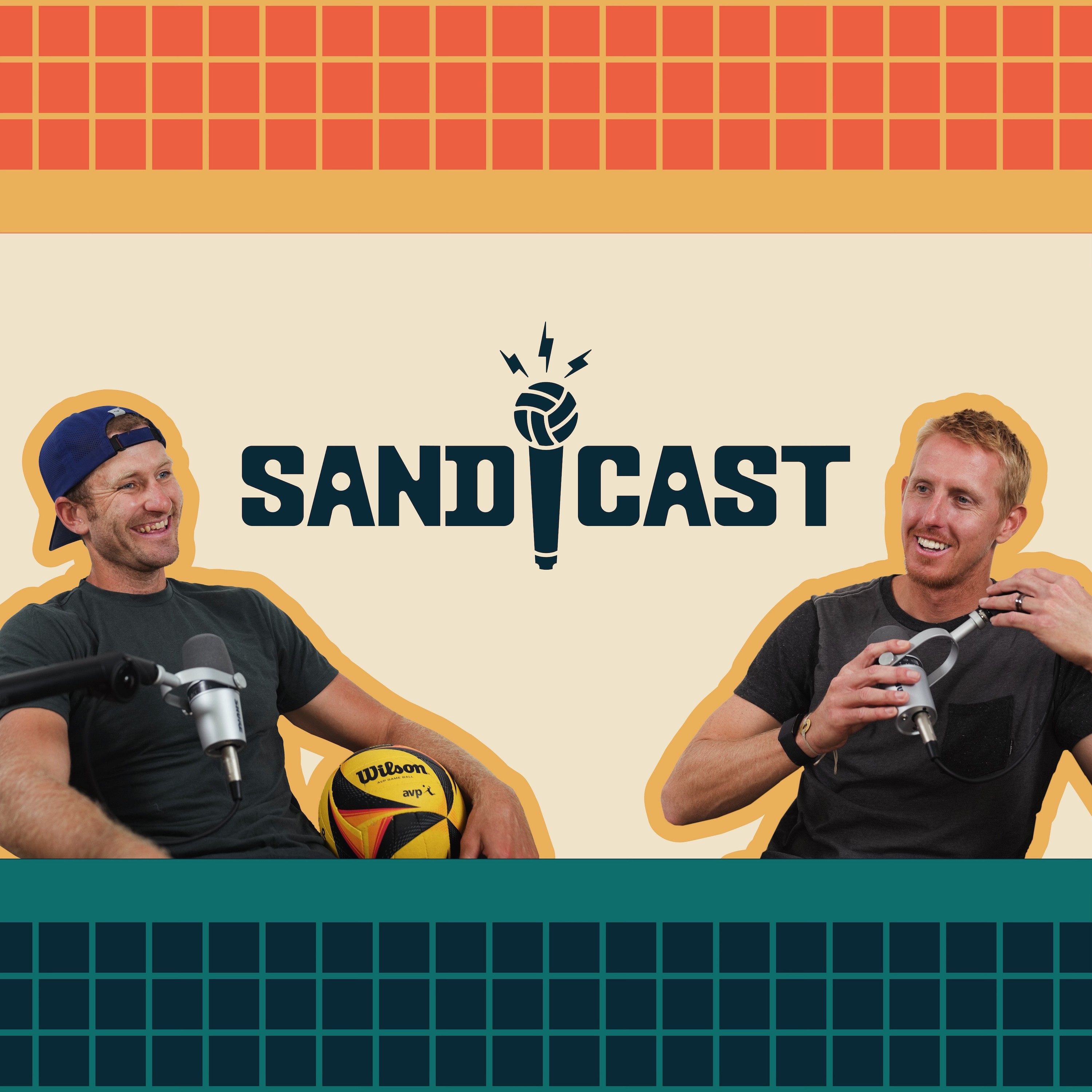
1.1M
Downloads
467
Episodes
SANDCAST is the first and leading beach volleyball podcast in the world. Hosts Tri Bourne and Travis Mewhirter take listeners into the world of the AVP, Volleyball World Beach Pro Tour and any other professional beach volleyball outlets, digging deep into the lives of the players both on and off the court as well as all of the top influencers in the game.
Episodes
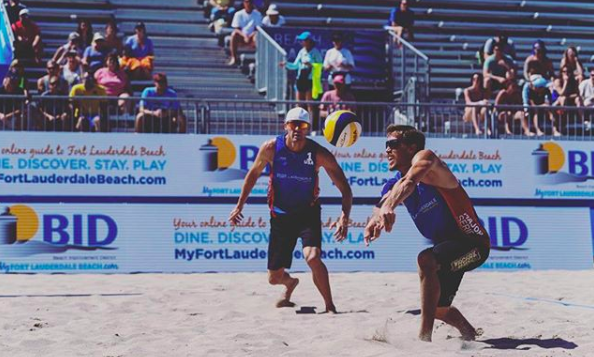
Wednesday Jun 06, 2018
Taylor Crabb just keeps playing -- and just keeps winning
Wednesday Jun 06, 2018
Wednesday Jun 06, 2018
There stood Taylor Crabb, arms raised, trophy in hand, smiling for cameras. A familiar pose that’s becoming quite regular for Crabb. It doesn’t matter if he’s on the left side or the right, with Jake Gibb or Tim Bomgren or Chase Budinger – Crabb can and will win with whomever he’s sharing the court, wherever the court may be.
Outrigger Canoe Club? He can win there, as he did on myriad occasions, with myriad partners, as a youth.
New York City? Yeah, he can win there too, alongside Gibb. It’s the site of his first AVP victory, and could very well be the site of his third by the end of this weekend.
Austin? He can push it to the finals there as well. Despite Gibb being injured. Despite only one day of practice with Tim Bomgren. Despite Bomgren playing on a sprained ankle that by the following Monday morning it would resemble a purple and blue softball more than it did an ankle.
Laguna Beach? In a tournament he never intended on playing? With a partner, Budinger, he’d never played with? Not even a practice? On a side he hadn’t played in more than a year?
He’ll take that $4,000 winner’s check, thank you very much.
This is what Crabb does. Not necessarily the winning, though he does that plenty.
He just plays.
He plays everything. Always has. Likely always will. Nothing at the moment seems to indicate otherwise, anyway.
“I’m pretty good at listening to my body,” he said, before admitting that “I do have injuries, but I do try to stay on top of them, one being my shoulder. A lot of rehab for my shoulder. Just keeping it strong helps a ton.
“Honestly, I’m sure you know, this is only my third year on the beach so far. Your first three years coming from indoor – the sand felt so good. Your body is way better. Right now, that’s where I am: 26, off the hard court, feeling good, diving around in the sand, nothing is going to hurt me.”
He’s feeling so good, in fact, that his coaches – Rich Lambourne and Tyler Hildebrand – have to order him not to practice. And even then, he still hops in for a drill or two, because there’s a new defensive position to learn, more reps to get, more playing to do.
He’s done this his whole life.
Doesn’t matter if it’s an impromptu dunk contest on the outdoor hoops across the street as a kid. Or basketball. Or soccer. Or living room volleyball. Or local tournaments that he’d win as a teen, “and I think everybody hated us,” he said, laughing. “All these 14, 15, 16-year-old kids winning all the tournaments.”
But when you look at those kids now, it’s easy to understand why most victories went their way.
There’s Trevor Crabb, winner of two FIVBs this year, and Tri Bourne, once ranked No. 2 in the world in 2016. There’s Spencer McLaughlin and Brad Lawson, two of the top-rated recruits from their respective high school classes. There is the Beard Brothers before they became the Beard Brothers. There is Micah Christensen, who is arguably the best setter in the world, and the Shoji brothers, Erik and Kawika, Olympians both.
And Taylor. Once the runt of the litter, so small that his aunt called him “Bug,” Taylor has since established himself as perhaps the best of the bunch, discussed among the top beach defenders in the country despite only being in his third year playing beach volleyball professionally. He whiffed in New Orleans of 2015, qualified for the next two – and then took a third in Manhattan Beach with Trevor.
Since then? He’s been in six finals and another six semifinals, with wins in New York and Hermosa Beach.
“I have goals in life,” he said. “And not one of those goal is to be better than someone. The short-term goal is to defend my title in New York. That’s No. 1 right now.”
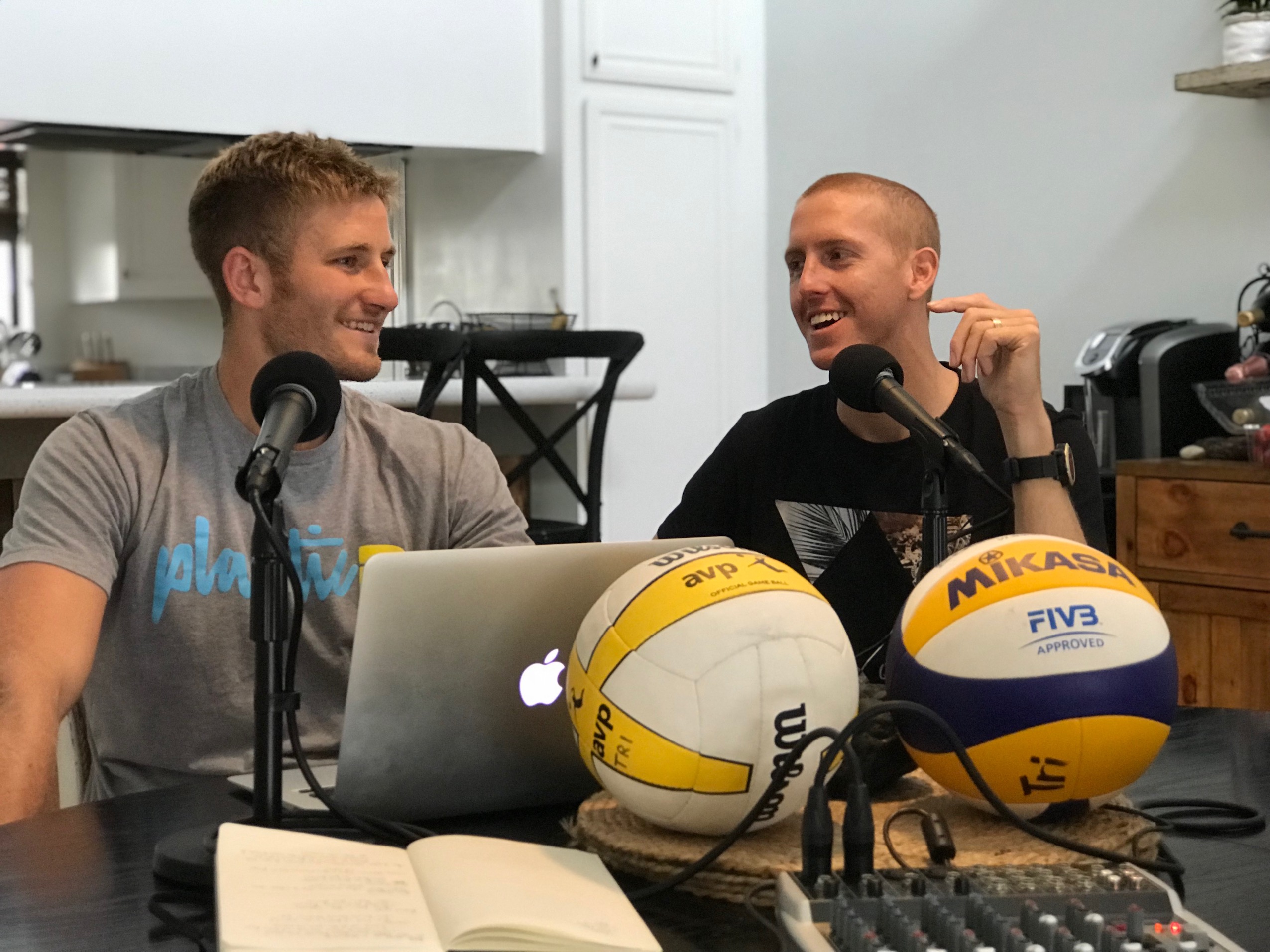
Monday May 28, 2018
Mailbag No. 2: Who's the best U.S. player not named Phil?
Monday May 28, 2018
Monday May 28, 2018
The mailbag is back!
On the second SANDCAST mailbag, Tri Bourne and Travis Mewhirter, alongside Podcast Mama Gabby Bourne, answer a wide variety of questions from you, the listeners. Before we get into the questions, a way to reach out to SANDCAST. If you have any questions, feedback, tips or suggestions, email us at sandcastpodcast@gmail.com.
Thanks to all who sent in questions for this week!
We answer one of the most oft-wondered questions in American beach volleyball: Aside from Phil Dalhausser, who has been the best American male in the past decade? Jake Gibb? Sean Rosenthal? John Hyden? Nick Lucena.
- The AVP has stopped at Madison Square Garden and played in front of a sold out crowd. If you had to pick one venue or site to play a tournament, where would it be? Both hosts, shockingly enough, may have biased answers based on hometowns and rooting interests.
- The United States, when compared to countries like Brazil, Poland, and Norway, among a number of others, is woefully behind in the development of young male talent. What's being done to produce higher-level talent at a younger age for the men?
- Finally, beach volleyball is slow to the game in terms of statistical and tangible analysis and breakdowns. Is that a direction the game is going, and if so, how?
If you like us, let us know and subscribe give a review on iTunes!
Follow us on Podbean to catch up with all episodes!
If you’re digging what we’re wearing, go ahead and give our sponsors some love at Plastic Clothing!
If you’re looking for some new board shorts or bikinis, check out Rox and their 80 PERCENT OFF SALE!
Popular on SANDCAST:
SANDCAST 20: Brotherly love with Maddison McKibbin
SANDCAST 17: Is p1440 the next big thing in beach volleyball?
SANDCAST 13: Sara Hughes embraces new responsibility: Role model
SANDCAST 12: Talking’ sh** with Trevor Crabb
SANDCAST No. 9: Chase Frishman and the AVP’s next wave of talent
SANDCAST 8: Phil Dalhausser has another mountain to climb
SANDCAST 6: A glimpse into greatness with April Ross, Part 2
SANDCAST 5: A glimpse into greatness with April Ross, Part 1
SANDCAST 3: It’s finally (finally) video game season for Kelly Claes
SANDCAST 1: The new Tri Bourne: Buddha Tri Bourne
Recover the right way with Firefly: Accelerated Athletic Recovery
Choose the ball the pros use. Choose Wilson, and use our 20 PERCENT DISCOUNT CODE: WILSONSAND!
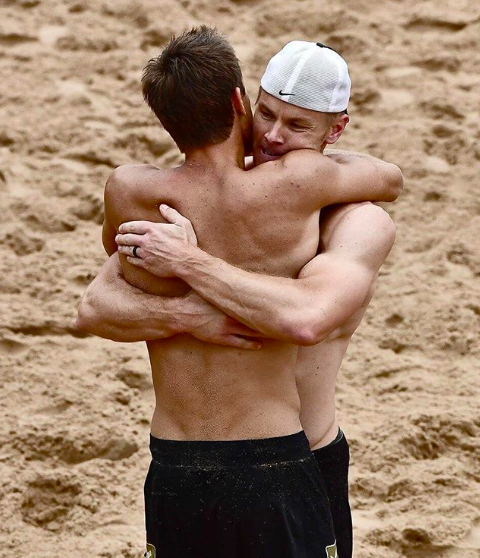
Wednesday May 23, 2018
Tim Bomgren, from Minnesota to the finals of AVP Austin
Wednesday May 23, 2018
Wednesday May 23, 2018
One day.
That’s it. That’s all Tim Bomgren and Taylor Crabb had for practice prior to AVP Austin. Crabb needed an emergency fill-in after Jake Gibb broke his toe. To the lefty from Minnesota he turned, despite never having played with Bomgren before, despite never having played with a lefty before.
Not that any of this is unusual for Bomgren.
He lives in Minnesota yet is one of the best blockers in the country. While many in Southern California are training four or five days a week in April, sometimes using sand socks because it’s too hot, Bomgren is shoveling snow, sometimes using sand socks because it’s too cold. The only other time Bomgren had made an AVP semifinal was in New Orleans of 2015, in which he and his brother, Brian, practiced for maybe two weeks prior.
One day?
Sounds about right.
“We talked about blocking calls and all that, we talked about who’s taking middle, who’s making the call when someone’s serving,” Bomgren said. “Taylor and Jake run a push to the outside – high, middle, low. Most teams do the same thing and I do the same thing with Brian. We talked about what his calls are, what my calls are and where to err.
“I prefer the ball to be further inside than outside and Taylor’s the same way. Talking those things out makes a huge difference in how the game flows.”
Indeed.
Whatever adjustments Bomgren and Crabb made, they worked. In a 16-team draw that featured a fully-loaded field, in which the only absent American was the one for whom Bomgren filled in, they made the finals.
Every team on their road to the finals had made at least the semifinals in the past year.
“It was extremely difficult,” Bomgren said. “I personally had to take myself out of the play, just kind of take it step by step, and I’m not trying to look at ‘I need to win three more matches today.’ It’s ‘I need to pass this ball, where it needs to be, so Taylor can set me.’ It was breaking it down for me, when we’re serving and receiving, taking it step by step and doing what you can, seeing how the plays turn out.”
Most turned out quite well. Some didn’t.
They lost their second match, against Ryan Doherty and Billy Allen, a match in which Bomgren sprained his ankle, though he made sure to note on SANDCAST that the sprain was not the reason they lost. Allen and Doherty played better.
That was it.
“In the first game, we controlled the match, we controlled our side of the net, and what happened was game two and game three we had a slow start, and that was largely due to what we did on our side of the net,” Bomgren said. “They were things we can control. So we tried to refocus that, and credit to Billy and Ryan, they played phenomenal volleyball. They ended up controlling the last two games and, ultimately, the match.
“We tried to refocus and we kept things simple on our side. Control our side of the net, do what we can do, and not do too much.”
And in not doing too much, ironically, Bomgren, on a bum ankle, with a partner he had never played with, after just a week or so of touching a ball, in heat that is entirely foreign to his native Minnesota, did more than he ever has on the AVP Tour. He and Crabb won their next four matches, including the always-alluring Crabb on Crabb quarterfinal matchup, including a three-set, nearly two-hour grinder in a rain-soaked semifinal against Reid Priddy and Jeremy Casebeer.
Just Tim being Tim.
“I think I played once and had four drilling sessions,” he said of his preparation, laughing. “Brian and I are both the type of players, and we’re very gracious for it, but we’re not the type of players who need 1,000 reps a day to stay fresh and stay on top of our game. We kind of pick it up as we go.
“Ultimately, what it comes down to, you get into that game situation, especially on the AVP Tour, and it doesn’t matter. If you’re focused, you know what you’ve been practicing, you know what you’ve been doing. Once I’m focused, and I’m into the game, I’ve done it 1,000 times. Once you get into that game mindset, everything comes back to you.”
All the way from Minnesota to the finals.

Wednesday May 16, 2018
Adam Johnson: The Hall of Famer hiding in plain sight
Wednesday May 16, 2018
Wednesday May 16, 2018
Adam Johnson couldn’t believe it.
He’d had some rough losses in his day, narrow losses with a lot on the line. Twice he had been the first team out of the Olympics, and twice it was because of a random, head-scratching injury. In 1996, when Johnson was partnered with Randy Stoklos in the Olympic trials in Baltimore, the two had to win just one of their next two matches, the first of which would come against the Mikes – Mike Whitmarsh and Mike Dodd.
Thirty seconds before the match, Stoklos hit one final warm up jump serve, landed on a ball and sprained his ankle.
Johnson and Stoklos would lose the next two matches, and their bid for the Olympic Games.
Four years later, it was Johnson and Karch Kiraly, needing essentially only to qualify for one final tournament to seal their spot in the Athens Games – and then it was Kiraly who suffered an injury.
Again, Johnson was the first team out.
“Thanks for reminding me,” he said, wistfully, on SANDCAST: Beach Volleyball with Tri Bourne and Travis Mewhirter.
Eighteen years have passed since just missing out on the 2000 Games, but stakes are still high for Johnson on the volleyball court.
Now, he’s wagering In N Out burgers.
“I’ve never lost to my girls,” he said. “Now I will say that with a little asterisk, because I am getting a little bit older, and I was up 22-10 when one of the girls shot the ball over on one and I turned to go get it and I heard my hammy go a little bit.”
Johnson wanted to call it quits.
The girls wouldn’t have it.
He made a bet: Loser takes the winner out to In N Out.
“They wanted to know when we were going,” he said, laughing. “I’m here going ‘I’m up 22-10, and you’re telling me you’re not giving me another shot?’ And they’re like ‘Well can you go right now? Or you forfeit.’ They are pretty ruthless.”
A competitive edge, perhaps, gleaned from their coach.
This was a man who, in his first full season on the beach after years playing on the indoor national team and overseas in Italy, won five tournaments and labeled that as being “kicked around.”
From 1994-1999, Johnson, playing with an armada of partners who would cement themselves as some of the best in the game – Jose Loiola, Kent Steffes, Kiraly, Tim Hovland, Stoklos – won at least four tournaments per season, in fields that were stacked with one Hall of Famer after the next.
That drive is still there.
“I don’t know if I ever gave up on being a player,” said Johnson, who retired in 2000, made a brief reemergence in 2005, before retiring again. “I’m always still trying to get up a ball up on my girls who can’t get it up, just using my foot or putting it back in play if it’s over the bench or something.
“I love coaching. I feel like I have a lot to offer. If they ask questions and want to learn, I feel like they can get better.”
Perhaps even more important: They might be able to get some In N Out.
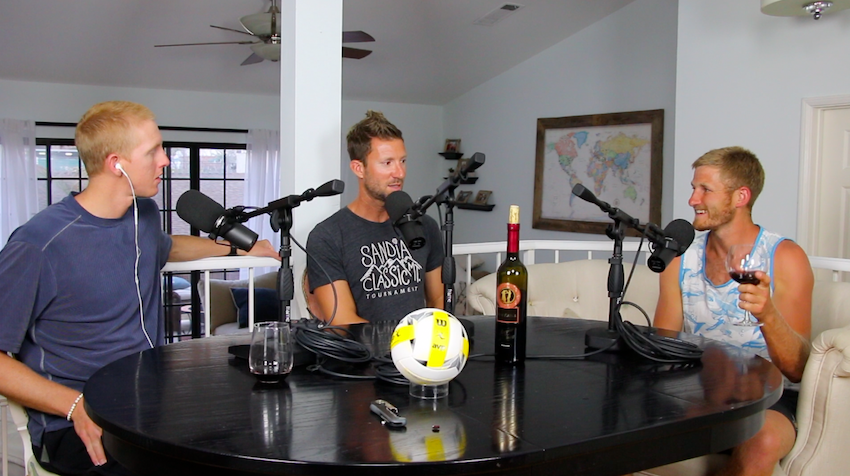
Wednesday May 09, 2018
Adam Roberts: Beach volleyball's talent finder
Wednesday May 09, 2018
Wednesday May 09, 2018
Lay out?
Was that what Adam Roberts’ friends said? He didn’t even know what that meant. So you just walked down by the ocean, put a blanket down, and… laid there?
Nope. Not Adam Roberts, this week’s guest on SANDCAST: Beach Volleyball with Tri Bourne and Travis Mewhirter.
His whole life, then as it is now, had been based on movement. Raised in High Point, North Carolina, Roberts grew up on a steady diet of soccer, cross country, track and basketball, receiving offers from ACC schools to run the 800 meters but also an offer from Elon College, which was just 30 miles down the road, to play point guard on its basketball team. He took the full ride to Elon, started every game in his last three years and earned All Colonial Athletic Association honors. During breaks, however, he would live at his parents’ house in South Carolina, and it was there, rather than laying out, that he discovered volleyball, a game that was quite similar to basketball in its movements – lots of quick lateral steps and explosive leaps – but it was on a beach.
So he would play pickup beach volleyball every day over the summers, and it paid off with an eight-inch increase in his vertical leap in the gap between his sophomore and junior years. In his junior season, he was leaping so high that he won four dunk contests.
“I had tried everything, man,” he said in a previous interview. “I tried the strength shoes, the SuperCat Jump Machine. It wasn’t until I began training on the sand with a weighted vest that I saw that increase, so I just used it as a cross-training sport.”
And when he graduated with a dual-degree in business and econ, Roberts was good enough that he had some small-time offers to play basketball professionally in Europe. He wasn’t interested.
“I was way too into volleyball,” he said. So he spurned the offers overseas and moved to Myrtle Beach, where his parents had built a three-bedroom house on the beach.
“I said ‘Sure I’ll live for free on the ocean and play beach volleyball,’” Roberts said, laughing. “It has a full hot tub, fire pit, a really nice volleyball court on the property on the ocean. It’s a great set up and very conducive for guys to train in.”
It didn’t take long for word to spread of the Roberts House of Volleyball in South Carolina. For nearly a decade, players cycled in and out, drinking and playing volleyball, living a life many dream of but few realize. And in the spring of 2003, when Roberts and his roommate, Matt Heath, a 6-foot-6 former collegiate soccer player turned blocker from Fort Myers, Florida, were playing in a tournament in south Florida, they happened across “a skinny white kid and a tall guy wearing steel-toed boots” that were damn good.
“That,” Roberts says, “is how I met Phil Dalhausser.”
Not long after, Dalhausser and the skinny, fiery white kid, Nick Lucena, moved to South Carolina.
They were going to become beach volleyball players.
“We would go out, I don’t know, probably on average four times a week,” Dalhausser said in a previous interview. “Adam pretty much ran the town so we’d drink for free. And those days we would roll out of bed at eleven or something like that and we’d stroll out to the courts at two.”
After the hangovers had been massaged and they were able to play, they’d head out to the court and train for a few hours and then, in between marathons of Halo, pour over film of Karch Kiraly and the greats at night.
“That house was volleyball one hundred percent of the time,” Heath said. “We’d be on a road trip discussing ‘Hey what do we do in this situation?’ It was just kind of an open forum and we just did a lot of homework on it. It was a good time. We all raised our level.”
But still, even in the Adam Roberts House of Volley, Dalhausser was different — “a freak,” Heath says, and he means it as the highest of compliments. “His improvement was meteoric, to be honest.”
When they popped in movies or played X-Box, Dalhausser would grab a volleyball and set to himself for all two hours.
“His concept was that he wanted really soft hands, almost that you couldn’t hear it coming in and out,” Roberts says. “That was his thing that he would set the ball so quietly that we could still watch the movie.”
During the winters, Dalhausser and Lucena would pick up shifts as substitute teachers and Roberts would help out with Showstopper, his parents’ dance competition production company. When it would be too cold to play on the beach, they took to the basketball courts, joining men’s leagues and dominating pickup games. And it was there – not during passing drills or watching Dalhausser set to himself during movies or winning tournaments over the summer – that Roberts knew just how limitless Dalhausser’s potential was.
“I had seen some good athletes, Division I basketball athletes, but when I saw Phil’s touch on the basketball court – he could dribble, he had a good hook shot, he could bring the ball up the court – I was like ‘Wow,’” Roberts says. “We played in a winter league, Nick is flying all over the court. I was like ‘Man he is fast. Wow, these guys, especially Phil – their potential is limitless.’
“I had always equated beach volleyball with touch. You kinda have to shoot seventy percent as a basketball player from the free throw line to be a good beach volleyball player. The reasons being, I don’t think Shaq could play beach volleyball because he couldn’t set. But Phil had this touch. He’s a different breed. Even to this day, being one of his best friends, knowing so much about him, I think you could do sports psychology just on Phil. He’s just so laid back, so chill. You read these books and stories about Tiger Woods and Michael Jordan and their whole life goal was to win a gold medal and be a world champion and MVP, and that’s not Phil.”
Dalhausser’s story is by now well-documented, as is Lucena’s. Roberts’ though, has not received the proper amount of ink. This was the man who all but discovered arguably the greatest beach player of his generation and the partner who helped get him there.
He has played in more AVP events than anyone on tour, including John Hyden. Just as he did with Dalhausser, he develops talent, sometimes traveling the world to do so, working with Marty Lorenz and Brian Cook, Brad Lawson and Eric Zaun, and now 23-year-old Spencer Sauter, a blocker out of Penn State with every indication of being a main draw mainstay.
This is what Roberts does. He plucks talent. Grooms it. Succeeds with it.
Anything but standing still.
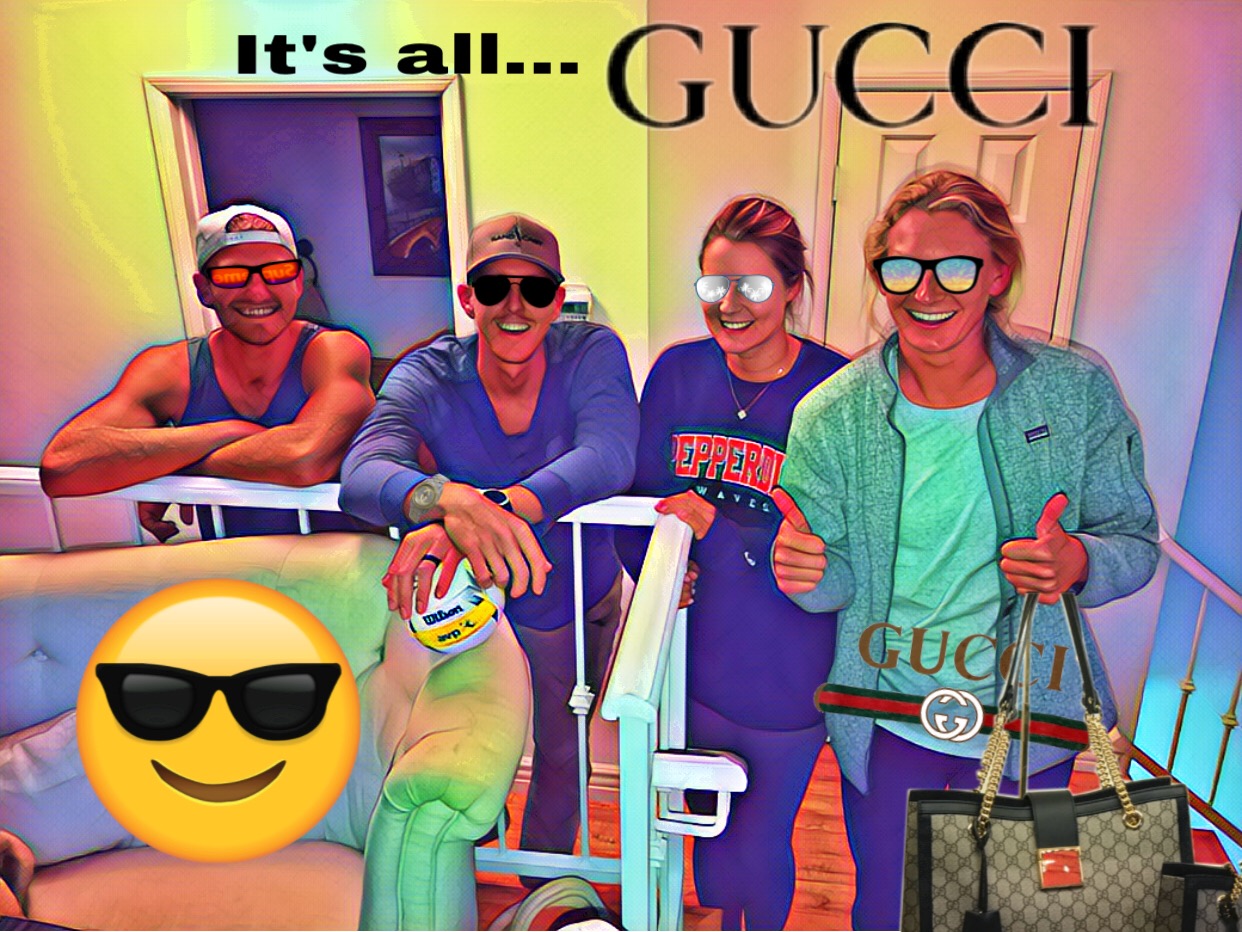
Wednesday Apr 25, 2018
For Kelly Reeves and Brittany Howard, it's all gucci vibes
Wednesday Apr 25, 2018
Wednesday Apr 25, 2018
It would seem that Kelly Reeves and Brittany Howard have been playing together for years. At the very least, it would seem as if they’ve been close for quite some time. They smile constantly. Laugh even more.
On more than one occasion on SANDCAST: Beach Volleyball with Tri Bourne and Travis Mewhirter, one finished the other’s sentence or filled in a blank.
Little about their natural chemistry, which is evident both on a volleyball court and in a podcast studio, suggests that the two have only recently begun a partnership and, by extension, deepening a friendship.
And yet here they are, exactly two tournaments in, complete with two bronze medals in a pair of NORCECA events, in Aguascalientes and La Paz, respectively, with a main draw just one week away for FIVB Huntington Beach.
For Reeves, this is no longer a novel concept, to pick up with a new partner and enjoy immediate success. She’s done this at every level of her career. Doesn’t matter if it was at Cathedral Catholic High School, where she won four straight CIF titles and graduated as the all-time kills and digs leader in San Diego County.
“I think that’s been passed,” she said, laughing.
She one-upped herself at UCLA, winning a national championship indoors in 2011 –- technically, she was also a member of the 1991 national championship winning team, rooting on the Bruins from the womb as her mother, Jeanne, was an assistant coach -- before hitting the beach and becoming the first UCLA All-American on the sand.
The AVP was no different, either. Reeves’ career began in 2016, in Huntington Beach, and a fifth-place finish with Ali McColloch assured her that she wouldn’t have to grind through an AVP qualifier again. She was named rookie of the year, and a year later, partnered with Jen Fopma, she reached the semifinals twice.
Two events into the 2018 season, she’s matched that total, with a partner who is a bit stunned herself by the pair’s quick success.
“A year ago, if you would have told me this is where I would be, that I’d be partnered with Kelly Reeves, playing in a NORCECA, I would definitely not believe you,” Howard said. “It’s just been really cool and awesome experience.”
A year ago, Howard had no plans to play AVP at all. After graduating from Stanford with a degree in Science, Technology and Society, Howard had a job offer in El Segundo. She planned to take it, maybe play in a few CBVAs. Nothing more, save for maybe the occasional local AVP tournament.
But Corinne Quiggle, her partner at Pepperdine, where Howard competed for a fifth year as a grad student, asked if Howard might want to play a few, beginning with New York in early June. They had just come off a third place finish at the USAV Collegiate Beach Championships, pushing USC’s indomitable duo of Sara Hughes and Kelly Claes to three sets.
Why not?
So off to New York they went –- and lost in the first round of the qualifier. Then to Seattle with the same result. San Francisco saw a second-round exit before a breakthrough in Hermosa and Manhattan Beach, where they coasted through both qualifiers in straight sets.
By season’s end, Howard, who had no plans to play on the AVP Tour, was a three-time main-draw player, a stunningly fast learning curve from a girl who readily admits she had a “rough start” to the beach at Pepperdine.
The rough start is firmly in the rearview, as Howard, technically still a rookie, is now partnered with one of the most athletic defenders on Tour, taking thirds in NORCECAs, enjoying champagne showers before the season has really even begun.
“We definitely celebrated on the podium for sure,” Reeves said, laughing. “That was my first time doing the champagne and I just sent it. Full send … It was our last pair of nice clothes and we were just drenched in champagne.”
A good problem to have.
Or, rather, as the ever-affable Reeves is prone to saying: A “Gucci” problem to have.

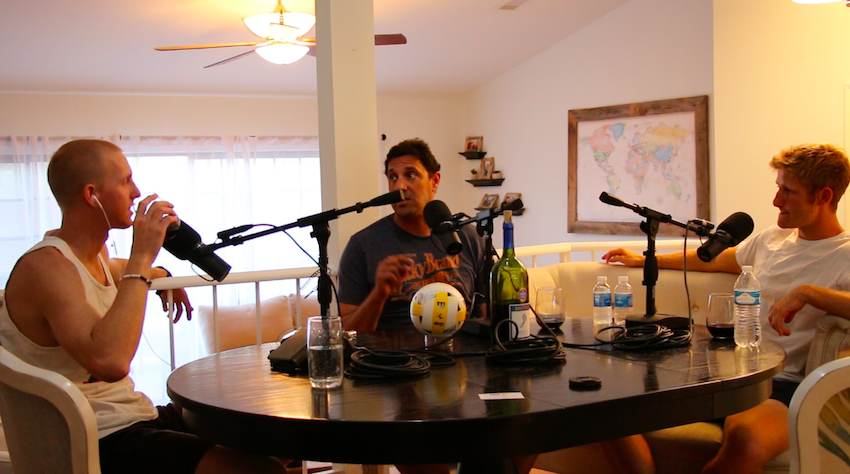
Wednesday Apr 18, 2018
Jose Loiola's legend only continues to grow
Wednesday Apr 18, 2018
Wednesday Apr 18, 2018
To read through the old LA Times archives, to dig through all of the gushing, flattering pieces, is to remember Jose Loiola as a man of near mythical proportions, a beach volleyball Paul Bunyan. How hard he could hit! How high he could jump! How entertaining he was to watch! How loud and brash and charismatic he was!
Loiola laughs at those memories. He laughs through a glass of wine, even though he has sworn off alcohol during the week.
It’s just one glass, right?
Nothing compared to what he and the boys could put down during the 90s, when the AVP was a rollicking party dishing out tens of millions per year and Brazil was in its nascent stages of becoming a bona fide beach volleyball power.
Loiola was the first, and for the 48-year-old there is no forgetting the day he and Eduardo Bacil took down the Gods. Back then, in the late 80s and early 90s, the Gods were known as Smith and Stoklos.
In the 86, 87 and 88 seasons, Sinjin Smith and Randy Stoklos would win 44 of 71 AVP tournaments and three of four FIVBs. You could count on one hand the teams who had a shot at beating them, and Jose Loiola would not have been among them.
It is with a delicious stroke of irony that Loiola and Bacil, a fellow Brazilian, stunned the Americans in their primes. Beach volleyball had been a weekend activity in Brazil prior to 1987. Nothing more. It was a soccer-mad state with beautiful beaches and recreational volleyball.
It was Smith who had a vision for the sport to grow internationally, Smith who worked with then-FIVB president Ruben Acosta to grow the game overseas, Smith who helped form an exhibition match in Rio de Janeiro, awakening the dormant beach volleyball giant that is the nation of Brazil.
Without Smith’s and Acosta’s efforts to establish the game in Brazil when they did, it’s quite possible we might never have heard of Loiola and Bacil. Without the FIVB establishing a beach volleyball branch to its indoor league, there may not be beach volleyball in the Olympic Games, and by extension no reason for Americans to pay attention to Brazilian beach volleyball at all.
But in 1993 there was no longer a choice. They had to watch, and with rapt attention, as Loiola and Bacil, who earned a wildcard to a pair of AVP events, in Fort Myers and Pensacola to begin the season, and then made every main draw after that on points, established themselves as one of the only international teams who could be reasonably expected to beat the Americans.
“I had the opportunity to play with and against the players I had grown up idolizing, the players I had grown up watching,” Loiola said on SANDCAST. “To me, that was the best thing. I’m competing with them and I’m beating all of them. From that point on, I realized if I put my time in and I become more professional and learn the hoopty-hoops, with the discipline and the perseverance, I knew I was going to get far.”
Loiola is not a man prone for understatement, and yet for him to describe his career as able to go far, and not to distances never before seen by a Brazilian beach volleyball player, is an understatement indeed. For at the end of that 1993 season, Loiola had been awarded the AVP Rookie of the Year, the first international player to do so.
In ’95, playing in an indoor beach tournament in Washington D.C., he and Bacil beat Stoklos and Adam Johnson in the finals, marking the first time an international team had claimed an AVP title.
“The AVP was the NBA of volleyball,” Loiola said. “It attracted the best players on the planet. It was, by far, the best tour.”
So much so that the AVP’s status as the premiere tour began to create animosity both in the U.S. and elsewhere. The Brazilian federation wanted Loiola to quit playing on the AVP and join the Brazilian national team so he could represent his native country in the 1996 Olympics, its inaugural year as an Olympic sport. The Americans, meanwhile, fought over a similar fault line: Why would they compete on the FIVB, an inferior tour with inferior money, to qualify for the Olympics? What could possibly compel them to travel overseas to play in a tournament for less prize money, against teams that couldn’t compete on the AVP, rather than stay home and play against the best?
While the Americans fought for a U.S.-based Olympic trial, Loiola demurred. He wasn’t going home to compete for a Brazil on the FIVB. He didn’t care about the Olympics. He cared about playing against the best.
And in those halcyon days, the AVP featured the best.
“In 1996, I had the choice,” Loiola said. “Either I go to the Olympics or I stay here and play AVP. I didn’t go to the Olympics. Why would I want to go to the Olympics when I could stay here, play 25 or 26 tournaments, making three times more money, why would I want to go to the FIVB and travel all over the world?”
He didn’t, choosing to remain in America while Brazil sent Emanuel Rego and Ze Marco de Melo and Roberto Lopes and Franco Neto to Atlanta. Neither finished better than ninth.
Loiola had no real reason to change course. Named the AVP Offensive Player of the Year from 1995-1998, he was one of the best players in the world playing on the best tour, with the top competition and more prize money than the sport had ever seen.
And then the AVP tanked.
Years of financial mismanagement had been masked by packed stadiums and electrifying volleyball and a rabid fan base. In 1997, the façade crumbled.
The AVP went bankrupt. The script had been flipped. To the FIVB Loiola went, rising up the world rankings with Rego, winning the FIVB World Championships in 1999, holding the No. 1 ranking heading into the 2000 Olympics, in Sydney, only to succumb in a stunning upset, finishing ninth.
“We just had a bad game,” Loiola said. “No excuses. Sometimes that just happens.”
It is one of the great shames of the sport that beach volleyball success is measured by Olympic success, for Loiola would never return to the Games. His hips went bed, to the point that he said he “was playing on one leg.”
His final event came in 2009, in Atlanta with Larry Witt. He’s since been inducted into the CBVA Hall of Fame, the International Volleyball Hall of Fame, the Volleyball Hall of Fame.
A living legend. And one who’s now imparting his wisdom on the next generation of them, serving as the coach of Sara Hughes and Summer Ross.
The fire’s still burning, the embers still hot, even as a coach. So disappointed was he after Hughes and then-partner Kelly Claes finished ninth in Fort Lauderdale that he hopped on the first flight out.
Now it’s Hughes and Ross.
He loves Hughes’ fire, Ross’ spunk. He wants to win FIVB Huntington Beach in the first week of May, knowing how much it would mean to Hughes, a Huntington native.
“That’s the one we want to win,” Loiola said. “In our home, our homeland. We’re excited, we’re on the right track. It’s just a matter of time.”

Wednesday Apr 11, 2018
'Weird-athletic, scrappy twig-noodle' Witt sisters prepared for rookie seasons
Wednesday Apr 11, 2018
Wednesday Apr 11, 2018
Don’t let these Witts fool you, with their Colgate smiles and constant giggles and impossibly amiable personalities.
Then again, how could you not be fooled?
Was that McKenna in the Oakleys or Madison? Wasn’t McKenna on the right? Or did they switch?
Hold on…it was Madison with the 4-centimeter tear in her ab…right? Or was that the other one, the one who looks just like her, down to the cascade of dirty blonde hair and almond-shaped eyes and what they call “twig-noodle” frames?
Kerri Walsh couldn’t figure it out when she played the Witts in 2016. Neither could their high school teachers on the one occasion they swapped places in math and Spanish, though so overwhelming was their guilt and nerves that they never did it again.
“I was so nervous,” McKenna Witt, now McKenna Thibodeau, said.
Yes, the Witt sisters are technically no longer. McKenna is now a Thibodeau, and Madison, recently engaged, will soon become a Willis.
The Thibodeau-Willis sisters don’t exactly have the same ring as the Witt Sisters. No matter. They still have the same identical looks, despite an NVL official once attempting to change that, marking Madison with a No. 1.
Or hold on. Was that McKenna?
Not that it mattered. She washed it off anyway. McKenna had a tear in her ab, and she wasn’t going to be picked on. Beyond that, Madison wasn’t going to let another team complain about playing a pair of identical twins, especially when one of them is injured, and exposing which one that was could mean furthering the injury.
Simply put: You don’t mess with a Witt, and you certainly don’t mess with one when the other is on the same court.
“We’re fierce competitors,” Madison said,. Killers with a smile.
So hungry for success are they that in less than five years playing beach volleyball they’ve become All-Americans, finished their four years at Arizona with an 85-33 record, qualified for an AVP in San Francisco in 2016, grinded through an NVL qualifier in 2017 and advanced to the semifinals, picked up their Masters degrees doing a grad year indoors with Cal Baptist all the while planning McKenna’s wedding.
Now they’re the poster girls for P1440, selected as one of the tour’s developmental teams.
It appears to have been a smooth ride for the Witts. Little turbulence, few setbacks, the American Dream from a pair of sisters who are as likable as they are marketable. Their path has been quite the contrary, and they like it that way.
They love telling the story about how they were cut from their seventh-grade team, touching a ball for the first time in an organized setting in eighth grade. They aren’t necessarily enamored with their 13-15 record at Arizona as freshmen, but they’re able to look back upon it with fondness, for prior to the season, they had to relearn how to throw a ball, let alone hit one. They’re not kidding, either. Their coach, Steve Walker, didn’t like how they threw a ball, which replicates the mechanics for an arm swing. So in their first week as collegiate beach volleyball players...they threw volleyballs.
“Looking back, we loved the process,” Madison said. “Steve would always say ‘Rome isn’t built in a day’ and man is that true… The process is beautiful. You don’t grow on mountaintops.”
They didn’t. And their steep growth created a style they refer to as “scrappy, weird athletic, and fun.”
The weird athletic can be up for interpretation. The fun part is not. They’re contagious, these Witts, forever smiling, laughter providing the soundtrack to their conversations, humble from an upbringing ground in faith.
“We’ll do whatever is takes to win,” McKenna said. “But we’ll still be nice.”
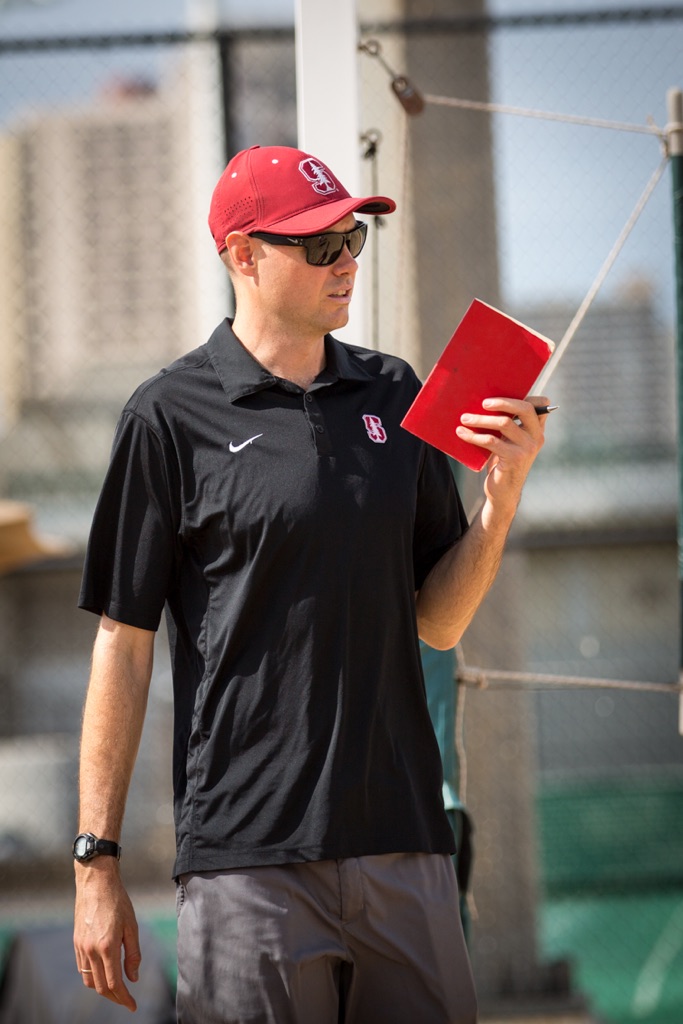
Wednesday Apr 04, 2018
Stanford beach volleyball continues to strive for more, with Andrew Fuller
Wednesday Apr 04, 2018
Wednesday Apr 04, 2018
Stanford beach volleyball is, in one aspect at least, no different than any other athletic team in that every member has their role. Like, say, the player whose job it is to remind everyone of their inevitable mortality, and that all things should be taken in perspective.
Or the one who brings in studies on the positive impact of placebo effects.
Or the researcher who is studying the physiological effects of forgiveness.
Or the yoga instructor. Or the Olympic assistant coach.
Or the sports psychologist, who “does sessions with the team that are very different,” coach Andrew Fuller said on SANDCAST: Beach Volleyball with Tri Bourne and Travis Mewhirter. “We’re inserting different voices and perspectives and voices into their world, because you never know what’s going to stick… People at the national level don’t have this type of support.”
Welcome to Stanford, the most academically rigorous and, almost paradoxically so, one of the most athletically competitive universities in the country, with the resources and exceptional minds to prove it.
“One of the things that really excites me about being at Stanford is not only the abundance of resources but the level of access to the resources and I would be remiss if I was not taking advantage of people who aren’t just easily accessible but are super stoked on what’s happening in athletics and want to help out,” Fuller said. “I think there’s a particular irreverence to Stanford that I enjoy.”
That unique level of expectations, that irreverence, is as much an advantage as it is a challenge. Some schools, like LSU, for example, are limited geographically. Stanford’s excellence, and its demands to continue to be excellent, are, ironically, its biggest hurdle.
This year, 47,450 students applied to Stanford. Only 2,040 were admitted – 4.2 percent, the lowest acceptance rate in the country, ever.
“It’s very self-selecting, and we can have some conversations that are very brief,” Fuller said. “We can have a conversation with a young student-athlete who, athletically, is wonderful, and is perhaps a very good cultural fit for us. And then we see the transcript and the conversation just stops. Stanford’s a choice, and some students don’t want to do the work that is required to get there. It’s my belief that for some students, Stanford is worth the work. And is it going to be easy? Not at all. It’s going to be difficult. And people who are up to that challenge and go through it thrive at Stanford.”
Indeed. One in particular, a name volleyball fans are likely to become familiar with in the years to come, is Kathryn Plummer, Stanford’s 6-foot-6 sophomore who already owns a lengthy list of accolades – Pac-12 Freshman of the Year on the beach, the ESPN W Player of the Year indoors among them.
“She’s doing things from a technical standpoint we haven’t really seen in players her size, ever,” Fuller said. “If any listeners get to watch her, KP is hand setting every ball that she can. If she can get her hands on it, she will. I’m trying to remember the last player her size who has ever hand set. I would love it if someone could name someone who’s 6-foot-6 who’s saucing. She’s kind of breaking the history of someone what it means to be a tall player… The approach she’s taking and the chance she’s taking and the risk – those are the things I’m stoked about, the way she’s approaching the future of her game.”
Plummer is exceptional, yes. But her mind, her approach, is also befitting the Stanford culture – the top one percent of the one percent.
“I’ve learned that if I don’t have a damn good reason for doing something, they’re going to find the holes in it and just blow me up,” Fuller said, laughing. “That’s the greatest gift. Whether that’s some game or drill that I come up with, they’ll immediately pounce on the loophole of it and sometimes I’m like ‘You guys are right.’ They just crush me all the time. What’s that old adage? Surround yourself with people who are better than you? At any point, I am the dumbest person in the room.”
The dumbest person with a bachelor’s degree from Virginia Tech and an MFA from the Academy of Art in San Francisco, who also happened to have a fair volleyball career of his own.
Not a bad option to have for a head coach.
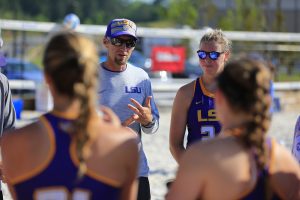
Wednesday Mar 28, 2018
LSU coach Russell Brock on building a beach power...without a beach
Wednesday Mar 28, 2018
Wednesday Mar 28, 2018
A common issue being navigated by the vast majority of college beach volleyball coaches: “What tools did they have in their indoor game?” LSU coach Russell Brock said. "Being able to evaluate them on film or in person, to be able to say ‘You know what, this is the stuff that’s going to translate really well to our game, or these are the things that are going to limit our ability to be successful on the short term.’ It’s gotta be a fast transition.
“What do they do well and how can I help them understand how it can directly translate to the beach game?”
Whether it’s LSU or USC or Pepperdine or UCLA, nearly every college beach coach will have to make that evaluation – how much of a player’s game will have to be modified from indoor to fit the sand?
Brock, though, and every other sand program not located on one coast or another, has another obstacle: How do you get volleyball players to play beach volleyball for a school that is nowhere near a beach?
LSU is located in Baton Rouge, a good four hour drive from Gulf Shores, Alabama, site of the NCAA Championships and likely the closest natural beach there is for the Tigers. It presents an obvious dichotomy from, say, USC, UCLA, Pepperdine, Hawaii, Long Beach State, Cal Poly, Loyola Marymount and a number of other programs that have a bounty of beaches to choose from.
Manhattan Beach or Hermosa? Santa Monica or Huntington?
LSU plays at a bar.
Ok. That sentence is misleading. Yes, Mango’s Beach Volleyball is a bar and restaurant, but it also comes equipped with 13 beach volleyball courts that are well-lit, well-maintained and as deep, if not deeper, than Manhattan Beach’s famously deep sand.
It is, objectively speaking, an excellent complex, one that prides itself on being the home of LSU beach volleyball.
But it’s not a beach. While as close a representation as a sand complex can get, Brock recognizes that the location of California alone is “just a massive advantage from a recruiting perspective,” he said. “And I went to [U]SC, so I understand the passion that’s involved with the tradition of all the schools out there with UCLA and Long Beach, and the girls who have wanted to go there growing up because their parents played and their grandparents played and it’s what they just do. Inevitably there’s a big advantage to that.
“The realistic perspective is, a lot of those players aren’t interested in leaving California, and I get it. I don’t hold it against them, it’s a beautiful place. There’s a ton of opportunities to play a sport at a really high level out there. For us, it’s about building our brand as a beach program to prove that we can play the game and play it well, to become attractive to people, regardless of where they’re from, to respect it and to know that we can train them and we can give them opportunities moving forward to continue to play the game and compete at the highest level. And that’s what takes time.”
But not, it seems, a tremendous amount of time. LSU is already one of the top programs in the country, consistently in the top 10 of the AVCA coaches poll, beginning the season at No. 6.
“We’re looking for the very best talent, wherever it might be,” Brock said. “We can’t care where they come from… and LSU is a pretty unique place. When people do move here from wherever they come from, they’re always impressed. There’s a lot of things that if you want it, we can provide it, and we can provide it at a super high level.”